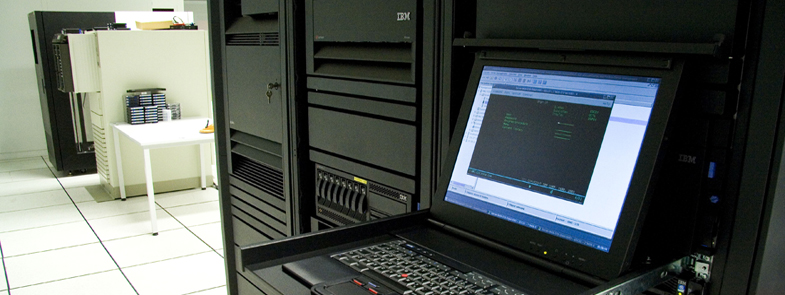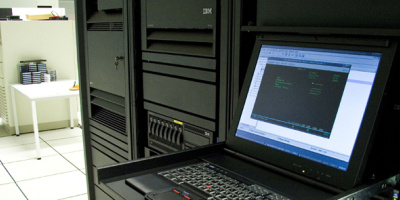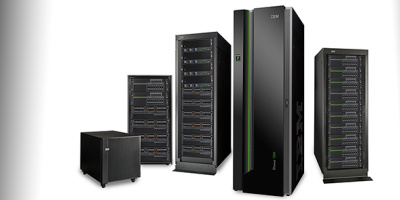Yes, high-praise press is good. So build on it.
One of the most interesting developments to come out of IBM Think this year was an eWeek article entitled “IBM i: The Most Amazing IBM Product You’ve Never Heard Of.” What? The platform had a flag-waving endorsement from outside our community? In eWeek? The Rob Enderle article started off like this:
“Occasionally, I run into a product that just has me sitting back wondering if I stepped into some kind of alternative universe. One of the first products that gave me this impression was the old AS400 from IBM. It was kind of like if you took an Abrams Tank and created a server with similar survivability. The stories of these things were legendary.
One system was on the top floor of a four-story building that was demolished, literally flattened, by a tornado and after falling those four stories, being buried by rubble and rained on, they only needed to dry it out to bring it back on line. Another system ran for a whopping 18 years without anyone patching, updating or even backing it up with no issues. Yet another was walled up accidently yet remained in service for years until someone tracing down the power and network wiring opened a wall to see what the wiring went to and found a hidden AS400.”
These “legends” have been around for a long time (and I can add about four more off the top of my head). The gushing continued to the final paragraph:
“While it isn’t faster than a speeding bullet, more powerful than a locomotive or able to leap tall buildings in a single bound, IBM I is the closest thing to a software platform superhero I’ve yet seen and likely the safest and most powerful server platform you’ve never heard of.”
So, yeah. Wow!
People were sharing it on Twitter and LinkedIn probably for the same reason I did: it was a ringing endorsement from outside the “IBM i bubble.” It was a fresh set of eyes seeing what we all know and then running full commentary on it. The important fact that it was from outside the bubble is not lost on me. If I or anyone else from inside the bubble had written a similar article, it would be self-serving to a degree. We depend on IBM i as our livelihood. We all have relationships with IBM, IBM i customers, programmers, admins, cloud hosts, and software vendors. Many of us do services and sell hardware. We speak at conferences, webinars, and user groups. In the end, we need IBM i to do well and we need POWER9 servers replacing POWER7 servers. When IBM i and the IBM POWER brand does well, then we do well and survive. If not, we don’t. It’s that simple.
Customers exist inside the bubble as well. An engaged customer understands what their backup actually backs up and when their hardware maintenance expires. They get education from user groups and IBM events on a relatively regular basis. They’re updating PTFs and can tell you where their last recent full system save is stored. They’re also usually on a regular hardware refresh cycle, replacing iron every three to five years. Most importantly, they understand the value of IBM i, where it’s coming from, and where it’s going. To them, this article is a gleeful reinforcement of what they already knew.
Mr. Enderle has absolutely nothing to gain by promoting this platform. And it really takes an outsider to show us that we can do better.
When I talk to a CFO or a controller at some company that has a POWER6-era server and knows nothing about IBM i, this is the kind of article I want to share because this is the kind of article those people need to see. Why? I think there’s a fairly wide disconnect between many customers and IBM. Customers who are disconnected are outside the aforementioned IBM i bubble. Why is there such a disconnect? I’m not so sure. But we need to bridge that gap.
I cold-call a lot of customers with vintage iron, systems that were installed back in 2008 and even earlier. I seem to have some sort of magic touch for finding systems out in the woods running V5R4, owned by people who haven’t seen or talked with an IBM rep, an IBM Business Partner, or anyone in between since the system was installed back before the iPhone was invented. We end up talking about observability and potential program conversions. We talk about reaching out to software vendors from 10 years ago to find an updated version of their software that’ll run on and past IBM i 6.1. We talk about hardware failures and the ability to get old parts when theirs will eventually fail. We talk about POWER9 and the least expensive way to get there. And those are just the people who will talk on the phone for 10 minutes. Some others I speak with have an old system but they have a “company they work with” that will upgrade them when either the customer or that company they work with is ready. Many have little interest in some free advice because they’re expecting a pitch to go along with the cold-call. Meanwhile, I know for a fact they’re running POWER5 or worse. Their machines have either gone end of service or will this year. All these folks are outside the bubble. And they’re running systems on borrowed time.
The IBM i community needs to do better in pulling those people into the bubble. We need a resurgence of user groups, user group attendance, meetups, and online events. We need more regular hardware refreshes. We need people modernizing their software solutions. We also need our community to share inside-the-bubble content like they did with the eWeek article. To that point, most importantly, we need help getting the message about IBM i and POWER9 out there. And that’s why Enderle’s article is so important. eWeek is a widely read publication outside the bubble. And just maybe he was able to reach some customers who need to be pulled back in to be engaged and once again be a part of the IBM i community. Once engaged, we can’t let them go again.























 More than ever, there is a demand for IT to deliver innovation. Your IBM i has been an essential part of your business operations for years. However, your organization may struggle to maintain the current system and implement new projects. The thousands of customers we've worked with and surveyed state that expectations regarding the digital footprint and vision of the company are not aligned with the current IT environment.
More than ever, there is a demand for IT to deliver innovation. Your IBM i has been an essential part of your business operations for years. However, your organization may struggle to maintain the current system and implement new projects. The thousands of customers we've worked with and surveyed state that expectations regarding the digital footprint and vision of the company are not aligned with the current IT environment. TRY the one package that solves all your document design and printing challenges on all your platforms. Produce bar code labels, electronic forms, ad hoc reports, and RFID tags – without programming! MarkMagic is the only document design and print solution that combines report writing, WYSIWYG label and forms design, and conditional printing in one integrated product. Make sure your data survives when catastrophe hits. Request your trial now! Request Now.
TRY the one package that solves all your document design and printing challenges on all your platforms. Produce bar code labels, electronic forms, ad hoc reports, and RFID tags – without programming! MarkMagic is the only document design and print solution that combines report writing, WYSIWYG label and forms design, and conditional printing in one integrated product. Make sure your data survives when catastrophe hits. Request your trial now! Request Now. Forms of ransomware has been around for over 30 years, and with more and more organizations suffering attacks each year, it continues to endure. What has made ransomware such a durable threat and what is the best way to combat it? In order to prevent ransomware, organizations must first understand how it works.
Forms of ransomware has been around for over 30 years, and with more and more organizations suffering attacks each year, it continues to endure. What has made ransomware such a durable threat and what is the best way to combat it? In order to prevent ransomware, organizations must first understand how it works. Disaster protection is vital to every business. Yet, it often consists of patched together procedures that are prone to error. From automatic backups to data encryption to media management, Robot automates the routine (yet often complex) tasks of iSeries backup and recovery, saving you time and money and making the process safer and more reliable. Automate your backups with the Robot Backup and Recovery Solution. Key features include:
Disaster protection is vital to every business. Yet, it often consists of patched together procedures that are prone to error. From automatic backups to data encryption to media management, Robot automates the routine (yet often complex) tasks of iSeries backup and recovery, saving you time and money and making the process safer and more reliable. Automate your backups with the Robot Backup and Recovery Solution. Key features include: Business users want new applications now. Market and regulatory pressures require faster application updates and delivery into production. Your IBM i developers may be approaching retirement, and you see no sure way to fill their positions with experienced developers. In addition, you may be caught between maintaining your existing applications and the uncertainty of moving to something new.
Business users want new applications now. Market and regulatory pressures require faster application updates and delivery into production. Your IBM i developers may be approaching retirement, and you see no sure way to fill their positions with experienced developers. In addition, you may be caught between maintaining your existing applications and the uncertainty of moving to something new. IT managers hoping to find new IBM i talent are discovering that the pool of experienced RPG programmers and operators or administrators with intimate knowledge of the operating system and the applications that run on it is small. This begs the question: How will you manage the platform that supports such a big part of your business? This guide offers strategies and software suggestions to help you plan IT staffing and resources and smooth the transition after your AS/400 talent retires. Read on to learn:
IT managers hoping to find new IBM i talent are discovering that the pool of experienced RPG programmers and operators or administrators with intimate knowledge of the operating system and the applications that run on it is small. This begs the question: How will you manage the platform that supports such a big part of your business? This guide offers strategies and software suggestions to help you plan IT staffing and resources and smooth the transition after your AS/400 talent retires. Read on to learn:
LATEST COMMENTS
MC Press Online